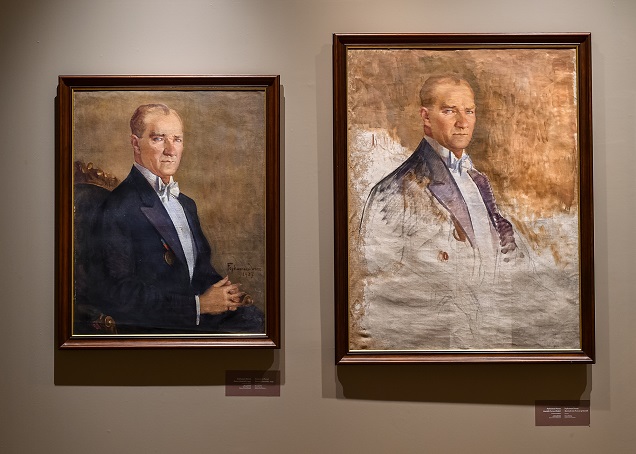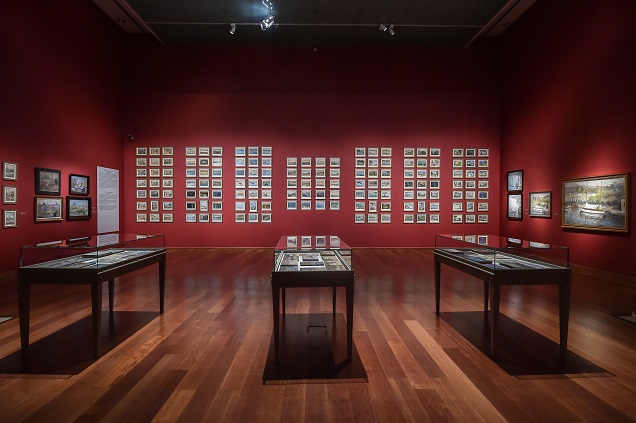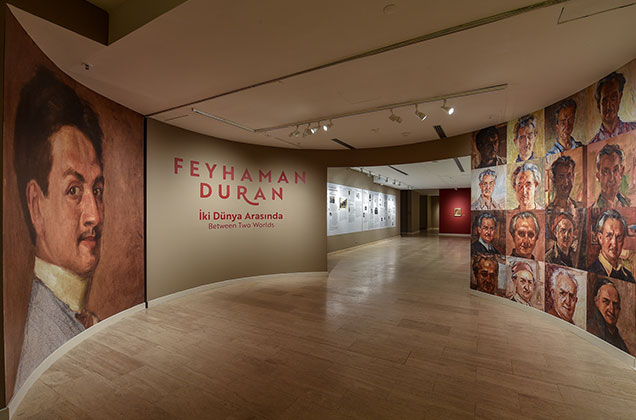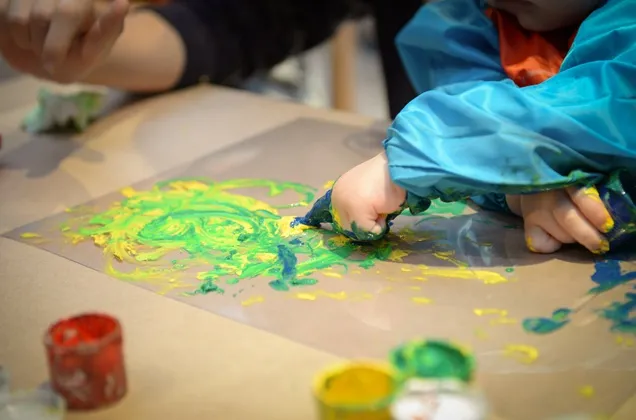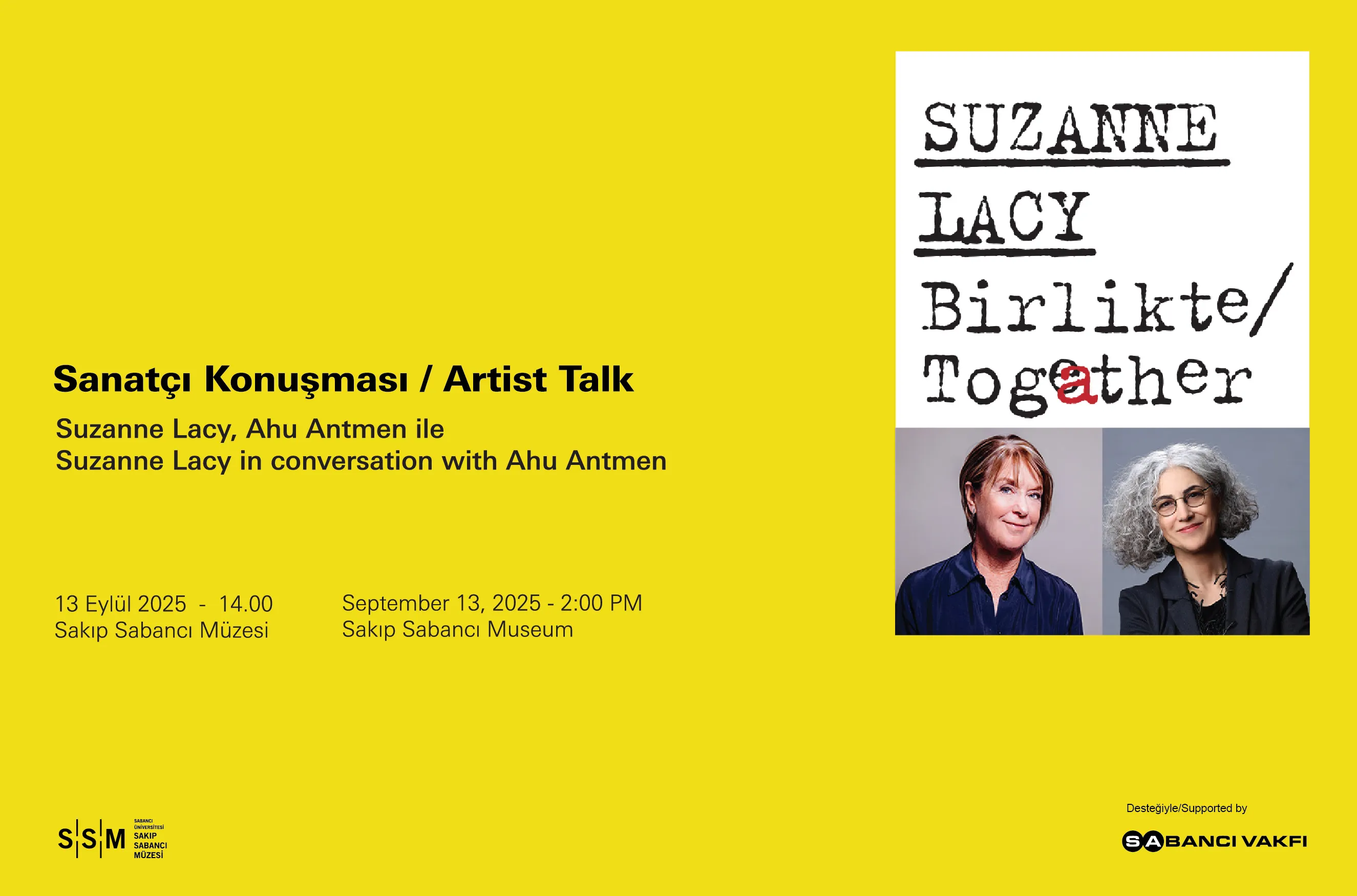06/02/2017
Sabancı University Sakıp Sabancı Museum (SSM) celebrates its 15th year with an exhibition on Feyhaman Duran, one of the leading members of the 1914 Generation, titled "Feyhaman Duran - Between Two Worlds."
More than 1000 pieces of the leading portrait artist's works and personal effects are on exhibit at the Sabancı University Sakıp Sabancı Museum in association with Istanbul University and the support of Sabancı Holding.
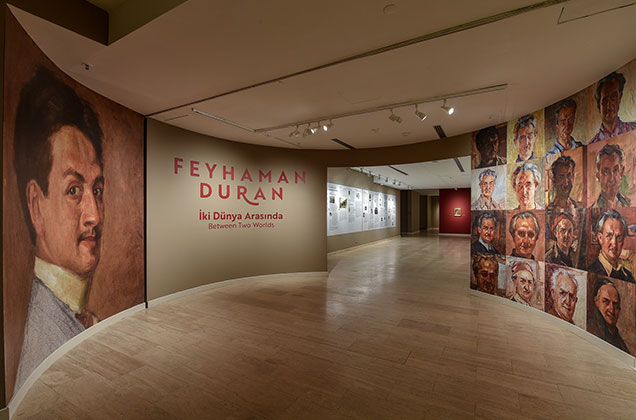
Sabancı University Sakıp Sabancı Museum (SSM) celebrates its 15th year with an exhibition on Feyhaman Duran (1886-1970), one of the leading members of the 1914 Generation, titled "Feyhaman Duran - Between Two Worlds" in association with Istanbul University and the support of Sabancı Holding.
The comprehensive exhibition portrays Feyhaman Duran's life with more than 1000 works born out of the artist's amalgam of tradition and Western art crafted during the transition from the Ottoman Empire to the Republic, sections of the house in Beyazıt where he and his wife Güzin Duran, also an artist, lived for most of their lives, and special exhibits illustrating his daily life and work environment. Arranged with art supplies, furniture, and selections from a calligraphy collection, these exhibits provide a closer look into the life and times of a pioneer in Turkish art. The selection from Feyhaman Duran’s “private collection” includes portraits for which the artist was mostly known for, as well as landscapes, still lifes and pochades.
Speaking in the press conference for the opening of the exhibition, Sabancı University Founding Board of Trustees Chair Güler Sabancı said: “We wanted to mark the beginning of our 15th anniversary by embracing our own values and featured an artist of this country. This exhibition is also important because it brings two academic institutions together. Feyhaman Duran lived through the Ottoman Empire into the Republic. Therefore, this exhibition is a close look not only into Feyhaman Duran’s life and works, but also our country and its past, enabling us to make sense of things. As you know, Sakıp Sabancı Museum is a university museum that belongs to Sabancı University, one of the youngest universities in Turkey. This exhibition was possible thanks to Istanbul University, which happens to be the oldest university in Turkey. An institution with hundreds of years of history had confidence in the experience of a very young institution, and the two academic bodies collaborated in exemplary fashion. Istanbul University generously shared the works and personal effects of the artist. I hope that this close and constructive cooperation between two universities will inspire other institutions to do the same. We are living through difficult times. We believe that the best way to overcome difficulties is to work harder and produce more than ever. Art becomes even more meaningful in days like these. That is because art unifies, heals, improves, and shows us new ways to understand our past and present."
Speaking about the exhibition, Museum Director Dr. Nazan Ölçer said, “We are delighted to celebrate the 15th anniversary of the Sabancı University Sakıp Sabancı Museum with a comprehensive exhibition of Feyhaman Duran. We owe the unprecedented vastness and inclusion of this exhibition to our partnership with Istanbul University. Before he died, Feyhaman Duran bequeathed his home and all furniture and other objects in it to Istanbul University for conservation, and after his wife passed away some time later, the University became the owner of not only the house, furniture and works of art, but also an entire world shaped by a long and illustrious life. The collection we have on exhibit today takes us to the intimate world of the artist. Hundreds of pochades, shared with no one except perhaps his wife, serve as a valuable guide into how the artist preferred to work.
When designing the exhibition, we traced the footsteps of Feyhaman Duran from his birth into an intellectual Ottoman family in 1886 through the traditional atmosphere of Istanbul and the 'alla franca' lifestyle prevalent in Beyoğlu at the time. We attempted to reconstruct the Istanbul of the artist's times with documentary footage we obtained from foreign sources. To understand the academic education he received, we followed him to Paris, to the École des beaux-arts and Académie Julian, and to help us envisage his life there, we contacted various archives and film museums abroad to obtain materials that depict the streets and quartiers of Paris in the 1910s. To provide a glimpse into Feyhaman and Güzin Duran's private life, we brought sections of their house located in Beyazıt, one of the oldest and most authentic neighborhoods in Istanbul, and inherited by Güzin Duran from her grandfather, the renowned calligrapher Yahya Hilmi Efendi, into our museum."
The exhibition of Feyhaman Duran’s life and works will be supported with documentaries, conferences and children's workshops to better illustrate the era of the artist, and includes photographs of documentary nature. An exhibition catalog containing essays on different periods in Duran's art, and a research on the role of the Khadiv Family, who enabled the artist to go to Paris, in the culture and arts of the late Ottoman Empire accompanies the exhibition as a rich primary source on the artist.
Feyhaman Duran’s art also depicts the transition from the Ottoman Empire to the Republic and bears witness to the clashes, struggles and developments of the time. The exhibition follows Duran from a crumbling empire to Paris, the home of art, and ultimately back to his homeland engulfed in turmoil, illustrates how his adventurous journey influenced his art, and tells the tale of the collapse of the Ottoman Empire and the rise of the
Republic through the history of art.
As an artist whose work was always influenced by his concurrent experience of the East and the West, Feyhaman Duran is mostly known for his portraiture due to the demand for portraits in Republican Turkey; however, he was also a prolific painter of landscapes, still lifes and other genres.
Different aspects of Duran's work are illustrated by exhibits including the first live model nudes he painted in Paris to landscapes of various locations and settings, and still lifes that depict calligraphic paintings as objects.
The “Feyhaman Duran - Between Two Worlds” exhibition will continue until July 30 at the Sabancı University SSM.
